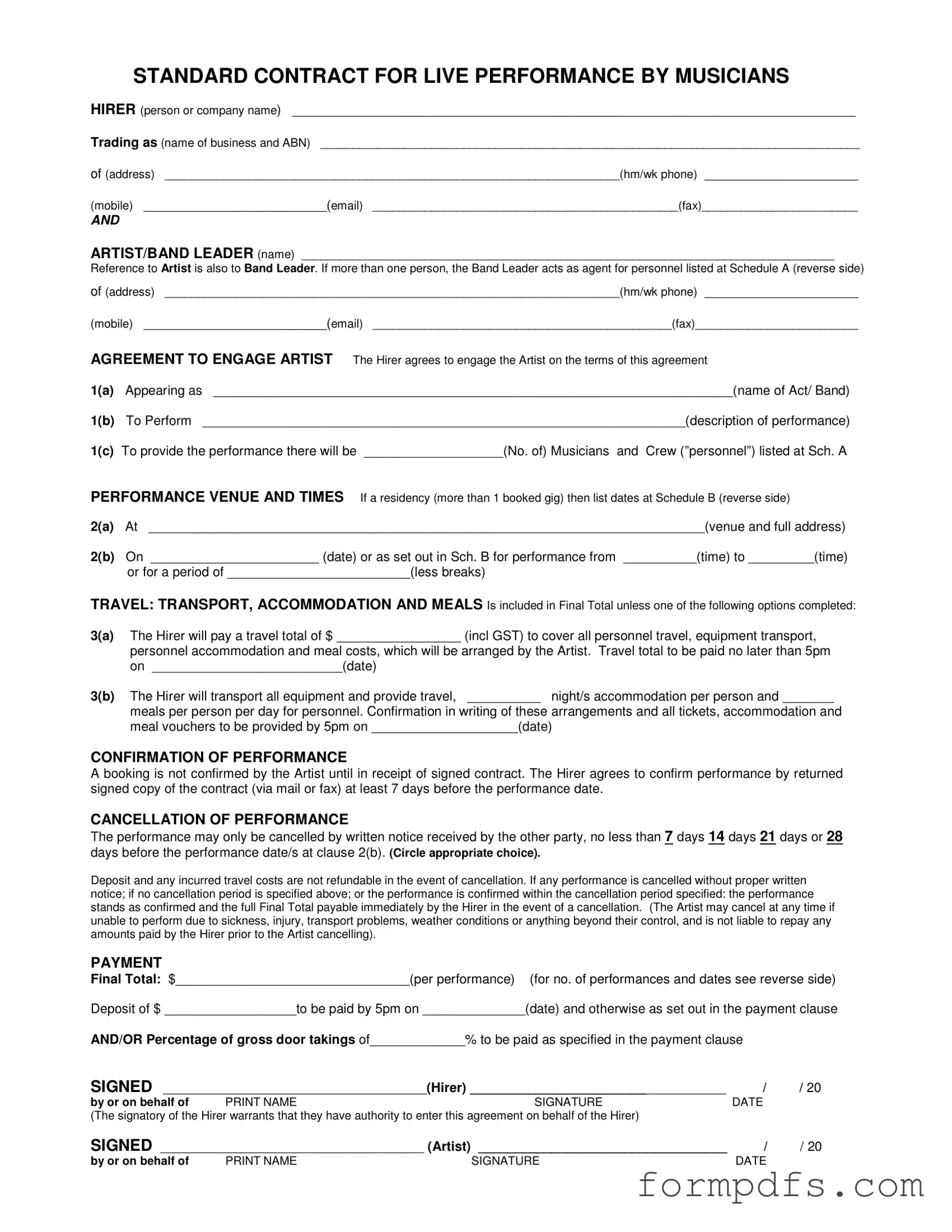The Live Performance Contract form serves as a crucial tool for both musicians and event organizers, ensuring that all parties involved have a clear understanding of their rights and responsibilities. At its core, this contract outlines essential details such as the names and contact information of the Hirer and the Artist or Band Leader, along with the specifics of the performance, including the name of the act, the description of the performance, and the number of musicians and crew involved. The form also addresses important logistical aspects, such as the performance venue, date, and time, as well as travel arrangements, accommodation, and meal provisions for the personnel. Additionally, it emphasizes the need for written confirmation of the performance, cancellation policies, and payment terms, including deposits and percentages of door takings. The contract further stipulates the responsibilities of the Hirer regarding equipment, staging, insurance, and indemnity, ensuring a smooth and professional experience for everyone involved. By clearly laying out these terms, the Live Performance Contract helps to foster a professional relationship between artists and organizers, minimizing misunderstandings and promoting successful events.
